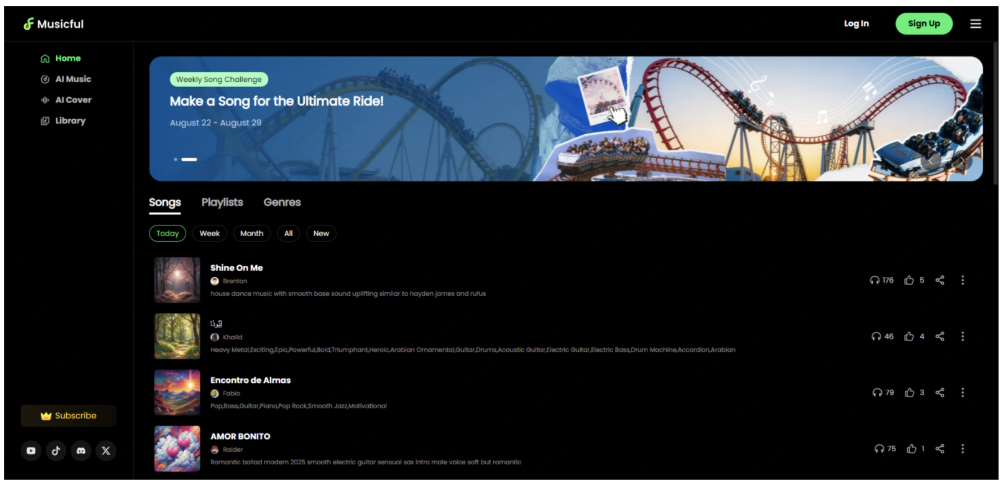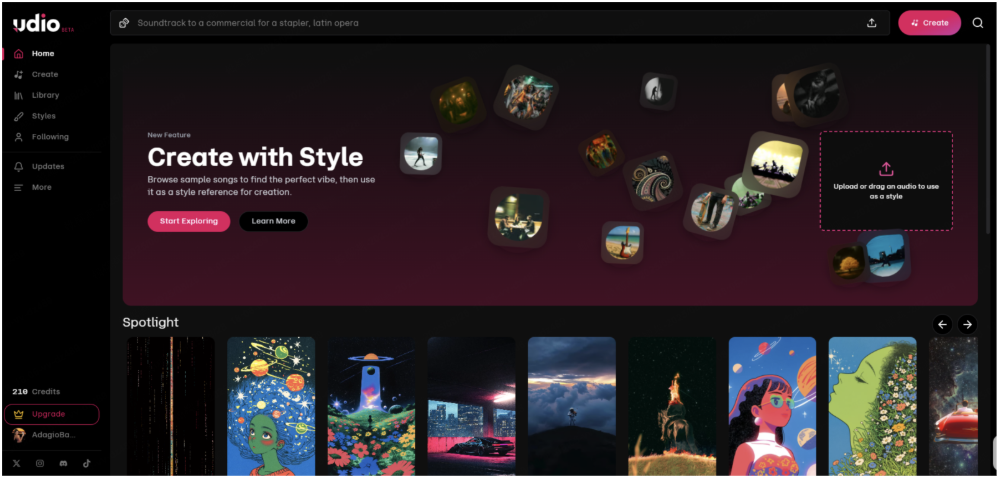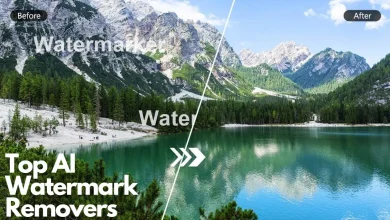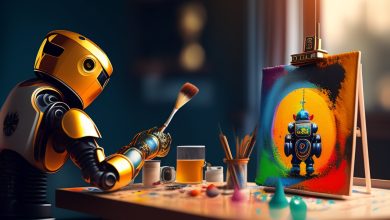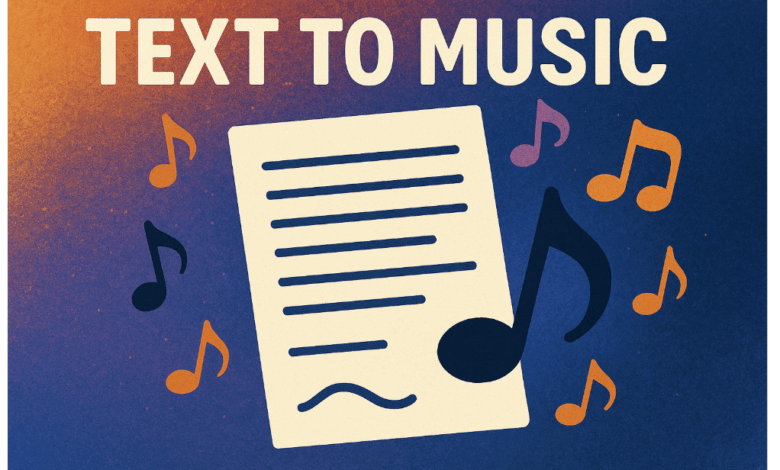
Text to music tools are dramatically lowering the cost of music creation. In the past, companies that needed a simple jingle-for example, for advertising-often had to hire professional music producers, with costs easily starting from thousands of dollars. Human creativity is valuable, but human labour is expensive.
Today, text to music platforms are reshaping this process. Instead of needing formal music theory, instruments, equipment, and a recording studio, anyone can type in a short description or a set of lyrics and instantly generate a song online. For creators and businesses that don’t need Grammy-level production but simply require accessible, affordable music, these tools have become a practical alternative – cutting costs while opening the door to new forms of creativity.
Part 1. What is Text to Music?
Text to music AI refers to a new generation of tools that transform simple written prompts into sound. Instead of needing music theory or instruments, users type a few words, and the system creates melodies, beats, or even complete tracks.
These platforms typically offer 2 main options:
- Full-song description – You write a detAIled prompt (for example: “a love ballad with soft piano and strings”), and the AI produces a complete track.
- Style, genre, or mood control – You pick keywords like jazz, lo-fi, or energetic workout mix, and the AI builds music that matches the chosen style.
From the technical side, most AI music generation tools combine:
- Language models – to understand your text, such as mood, rhythm, or narrative.
- Audio generation models – often based on diffusion or transformer architectures, which convert that understanding into audio waveforms.
For creators, the process feels seamless: type in an idea-like “a chill background track with acoustic guitar” – and an AI text to music generator free tool can return an audio file within seconds.
Text to music tools bridge the gap between imagination and production, turning music creation into something anyone can access online.
Part 2. Why Is Text to Music Lowering the Barrier?
Text to music AI tools are breaking down the traditional barriers of music production. In the past, writing a song often meant years of practice and access to costly studios. Now, an AI text to music generator can make the process fast, affordable, and open to anyone.
Here’s why:
- You don’t need to read sheet music or master instruments. With an AI text to music platform, typing a short idea is enough to create a melody or a full track.
- Hiring a producer or booking studio time can cost thousands of dollars. A text to music AI free tool gives individual creators an option to experiment with sound without spending heavily.
- Instead of waIting days for a demo, you can hear results within seconds. This quick turnaround encourages experimentation and makes creative work more flexible.
- Users can guide the AI with prompts such as “lo-fi chill beats” or “upbeat pop”. A text to music AI generator free will then adjust tempo, instruments, and mood to match the request.
Taken together, these features explain why AI text to music generator platforms are gaining popularity so quickly.
These advantages also explain why such platforms are gaining popularity across different fields:
- Content creation – YouTubers, podcasters, and TikTok users use AI text to music generators to add original background tracks without paying licensing fees.
- Education – Teachers and students can use these tools for music classes or creative projects, without needing instruments or technical knowledge.
- Marketing and advertising – Brands can quickly create short jingles or theme tracks tailored to campaigns, cutting both time and cost.
- Personal creativity – Hobbyists can turn their ideas into songs for fun, sharing with friends or online communities.
Together, these features and applications show how AI text to music platforms are lowering barriers and broadening access to music creation worldwide.
Part 3. Text to Music in Action – Case Studies
Platform Case A: Musicful
Musicful has quickly become one of the most widely used AI text to music generators, with over one million registered users worldwide. According to its recent platform data, users are generating tens of thousands of new tracks every month – covering everything from short jingles for advertising to full-length demos for independent musicians.
The appeal lies in its balance of accessibility and professional output:
- Cost savings – Creating an advertising jingle through a traditional producer can cost $1,000 or more, while Musicful’s free and subscription plans lower this to a fraction of the cost.
- Speed – A song that once took days to produce can now be generated in under a minute.
- Scalability – With advanced models (V1.0, V1.5, and the new 1.5X), Musicful supports tracks up to 8 minutes and lyrics up to 5,000 characters.
- Flexibility – Features like Add Vibe allow creators to generate songs with a similar style or atmosphere to their favourites, while export options (MIDI, MP3, WAV) support further editing.
This combination of low cost, instant results, and creative flexibility illustrates why platforms like Musicful are central to the rise of AI text to music in everyday use.
Platform Case B: Udio
While tools like Musicful focus on speed and accessibility, Udio has positioned itself as a leader in AI text to music generation for users who want maximum control over their creative process. It may take longer to generate songs, but in return it offers deeper flexibility and professional-grade features.
Key Capabilities:
- Flexible length – Extendable clips, with support for up to 15 minutes through continuation.
- Complex arrangements – Handles multi-layered structures, advanced harmonies, and richer instrumentation.
- Style and mood reference – Upload an audio clip or pick a sample track to set genre, mood, or atmosphere.
- Dual creation modes:
- Describe Your Song: use prompts, lyrics, and uploads to define genre and mood.
- Use a Style: start from a reference track (either Udio’s samples or your own audio).
- Advanced controls – Choose between model versions (V1.0, V1.5, V1.5 Allegro), adjust BPM, lyric timing, prompt strength, and even continuation seed values for reproducibility.
Udio is designed for creators who want to shape every aspect of their music, from structure to fine timing. Rather than focusing only on instant outputs, it provides professional users with the tools to experiment, iterate, and refine until the track meets their exact vision.
Part 4. Challenges and Open Questions
Despite their rapid growth, AI text to music platforms still face several challenges that raise important questions for the future:
- Copyright and ownership: Who owns an AI-generated song-the user who wrote the prompt, or the company that trained the model? Current copyright laws in many regions remain unclear.
- Originality and similarity: Some outputs risk sounding too close to existing works. This raises concerns about potential plagiarism and legal disputes.
- Quality gap: While tools like text to music AI free generators can quickly deliver usable tracks, professional musicians may find the results lacking in nuance, mixing, or production polish.
- Ethical and creative impact: If businesses and creators increasingly rely on automation, what does that mean for human composers? Will AI become a support tool or a replacement in some areas?
- Scalability and bias: AI systems learn from existing music datasets. If these datasets are limited or biased, the outputs may reinforce narrow musical trends rather than encourage diversity.
These open questions highlight that ai text to music generator tools are not just technical innovations but also cultural and legal experiments. How these issues are resolved will determine how widely such platforms can be adopted in the long term.
Conclusion
The rise of AI text to music tool is reshaping how people approach music creation. What once required instruments, studios, and professional knowledge can now be done with a few lines of text, opening the door for individuals, small businesses, and content creators to experiment with sound in ways that were previously out of reach.
Platforms such as Musicful and Udio illustrate the two sides of this shift: one emphasises speed and accessibility, while the other provides depth and professional-level control. Together, they show that the landscape of music is expanding, not narrowing-there is room for both hobbyists seeking quick results and professionals exploring advanced creative possibilities.
Looking ahead, the question is less about whether these tools will stay, and more about how they will evolve. Issues around copyright, originality, and ethics remain unresolved, but the momentum is clear: AI text to music has already lowered the barrier, and the next challenge is ensuring it grows in a way that benefits both creators and the industry at large.

